Other than Ramses, whom most people know from the Book of Exodus, King Tutankhamun is the most famous pharaoh in Egyptian history. That’s probably more due to the desecration of his tomb by Howard Carter’s 1922 archeological expedition than because of his accomplishments during his 1334 BC to 1324 BC reign. Even that expedition owes more of its fame to a legend that a curse struck the people involved than its value to science and history. But is that selling King Tut and his legacy unfairly short? Was there more to his tomb than just the fact it was the rare one which was excavated in modern times? Let’s find out!
10: Took the Throne During Troubled Times (Thanks to His Father)
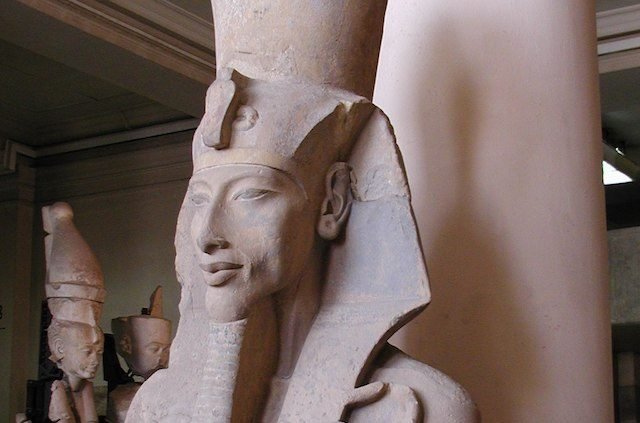
Ascending to the throne of one of the most powerful kingdoms in the world at the age of nine is asking a lot of anyone, but Tutankhamun did so under particularly difficult circumstances. It wasn’t even because Egypt was in particular danger of being conquered, famine, or any external threat. It was because of his father Akhenaten.
The most significant act of Akhenaten’s 17-year reign was the changing of the official religion of Egypt from polytheism to the worship of the Sun god Aten. To this end, which flew in the face of literally a thousand years of religious practice, Akhenaten went to highly extreme measures. He ordered the old temples closed and statues of the old god Amun destroyed. He also moved the capital from the sensible location of Thebes to his prefered location of Amara, even though it forced the 20,000 people he brought to the desert wasteland to build a city from scratch. By alienating both the priests and many of the commoners of his Kingdom, Akhenaten made himself so unpopular by the end that Tutankhamun changed his name from the original Tutankhaten to distance himself from his father’s legacy. His body was so poorly preserved after his death that it was impossible to determine if he died of natural causes or not.
9: Actually Had Significant Accomplishments
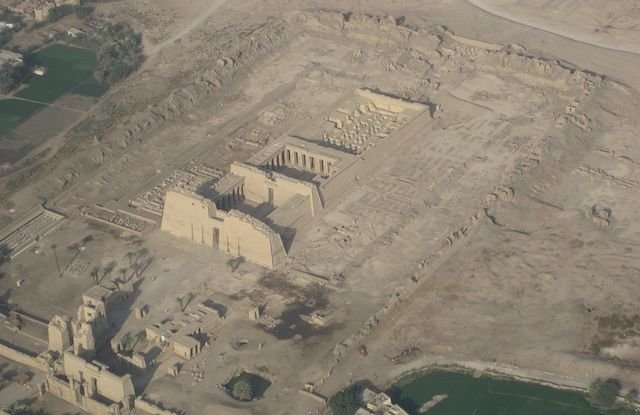
Because he died at the relatively young age of 19 and his main claim to fame happened so long after his death, Tutankhamun’s reign usually gets dismissed as being light on accomplishments. But in addition to pleasantly surprising all the skeptics of the notion of putting a nine-year-old in power by restoring the old religion and moving the capital back to Memphis, he went much further in repairing the religious rifts. He repaired the old temples and statues and stabilized the economy sufficiently that he was able to order the construction of the Medinet Habu temple, the temple at Karnak, and expanded the temple at Soleb.
The temple at Medinet Habu in particular stands out for the immense, largely intact statue that still stands there. These may seem narrowly focused, but in light of the circumstances under which he came to power they influenced Egyptian culture long after Tut passed away. However much they were also attributable to his advisors, such as General Horemheb and Vizier Ay, he was willing to listen to reason when he needed to.
8: Was Internationally-Minded
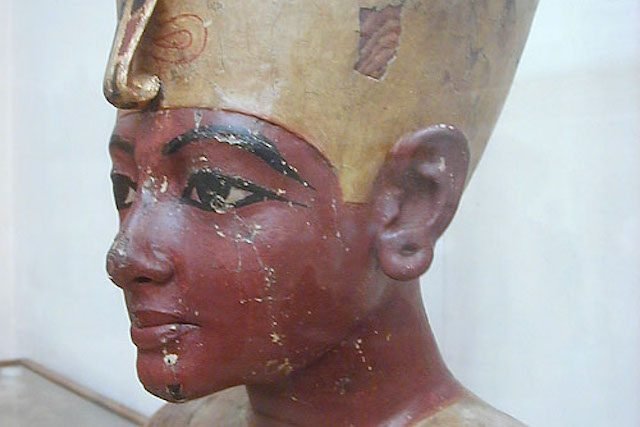
In addition to alienating many of his subjects with attacks on the old religion, Akhenaten also caused trouble for Egypt by neglecting international relations, resulting in the loss of trade partners and even regional tax collections within Egypt himself. Tutankhamun also sought to restore relations with the neighboring Nubians and Asiatics.
Evidence suggests that it wasn’t all peaceful overtures and trade deals, and that battles with both of these rivals occurred. However, none of them were anywhere near so severe that they threatened the survival of the Egyptian kingdom, or even involved direct intervention from the Boy King himself. It was a vital step in preventing the splintering of the empire and saving the economy.
7: His Half-Sister Wife
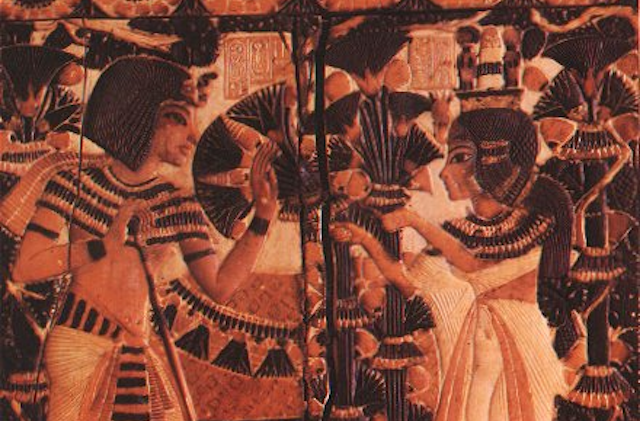
The single most uncomfortable aspect of King Tutankhamun’s reign to discuss today was his marriage to Ankhesenamun, his sister from another mother. Even though she was only 13-years-old when she married the nine-year-old king, the record indicates that he wasn’t her first husband, or even her second. To make the situation even more uncomfortable to a modern person, her previous husbands included King Tut’s father Ankhesenamun when she was only 11-years-old. She was even briefly married to Smenkhare, a brief interim king before King Tutankhamun took the throne.
From what we know of the couple, it was claimed their marriage was cordial because the two had grown up as good friends (at least, that is, to the extent they’d been able to grow up before they were forced to be married). Their marriage was marked by tragedy, though, in that Ankhesenamun twice gave birth stillborn daughters, leaving the king without an heir and ending the clan’s lineage. The baby daughters were buried in King Tut’s tomb but his wife did not have the same privilege. After Tut died in 1324, she wrote a letter to the king of the Hittites requesting that he send one of his sons for a marriage. The effort failed, and she ended up married to the aforementioned Vizier Ay, by some accounts reluctantly, making him the new Pharaoh. Her indignities were not done, and Ay’s tomb does not mention her at all. It wasn’t until July 2017 that it was thought her gravesite might have been found, a sign of how inauspiciously she had been treated in death.
6: Skilled Archer
Archery was a popular pastime among pharaohs by King Tut’s time. His predecessor Amenhotep II claimed, 800 years earlier, that he fired arrows with such power that he had sent four arrows through a heavy brass target and dared others to do the same. However, judging by the remains, even he had only a casual interest in it compared to Tutankhamun. While Tutankhamun never saw combat, he more than made up for it with his interest in target practice and hunting, particularly in a royal chariot.
When Howard Carter’s team excavated his tomb, there was a staggering collection of archery equipment in it. There were 14 regular bows. There were also 32 composite bows, a precursor to later and particularly powerful compound bows whose design had been imported from Asia. There were also more than 400 arrows to accompany him to the land of the dead, a particularly healthy arsenal for even the most enthusiastic deceased hunter.
5: Not Very Healthy
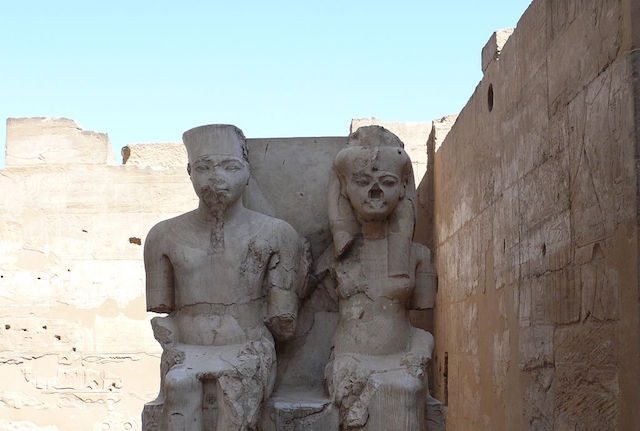
As indicated by the state of King Tut’s own marriage, inbreeding was endemic by the time he was born and he was one of the many monarchs who paid the price for it. For one thing he had a clubfoot, which contributed to him needing to use a cane even though he never aged out of his adolescence. As if to serve as a painful reminder of this fact in the afterlife, there were many canes in his tomb. Even standing in a chariot would have been difficult for him, so his becoming a practiced archer must have been much more difficult for him.
But that wasn’t the worst of it. It also resulted in him having a severely weakened immune system. This meant that not just at the end of his life but for years he struggled against bout after bout of malaria. National Geographic reports that he dealt with malaria tropica, a particularly deadly form of the infection. In fact, his body is the oldest known to contain any trace of malaria in it, let alone enough to indicate a lifetime’s worth of different strains. In 2005 it was discovered that he had a partially healed fracture in his left thighbone, an infection of which became the most likely cause of death for the boy king. Frankly it seems almost a fluke that he even lived to age 19.
4: Not Assassinated
In 2002 Time magazine reported that British film producer Anthony Geffen had hired former FBI profiler Greg Cooper to lead forensic analysis of Tutankhamun’s body in the belief he’d been assassinated. It wasn’t the first time. Howard Carter had commissioned a similar analysis of the body in 1925, which found no evidence of foul play. In 1968, a University of Liverpool researcher claimed he’d found evidence of a blow to the back of King Tut’s head. The prime suspect was his Vizier Ay, a theory made all the more juicy because he married Tutankhamun’s wife and took the throne. But General Horemheb, chief treasurer Maya, and even Ankhesenamun were considered suspects in the 3,300-year-late case.
It was a debunked theory by 2005. The injury to the back of King Tut’s skull wasn’t the fault of any of his contemporaries. It was Howard Carter’s, and had been inflicted when the body was being retrieved. This was indicated by the fact none of the embalming fluid that his body was treated with was found to have penetrated into the skull, as it would have if a fracture had been there at the time of death. Even then, Egyptian analysts admitted that it was possible that King Tut was poisoned, but there was no indication of that and the needed tissue to test was not available… as if that conspiracy theory simply had to be allowed to keep going in some way.
3: Sealed in Sarcophagus with Resin
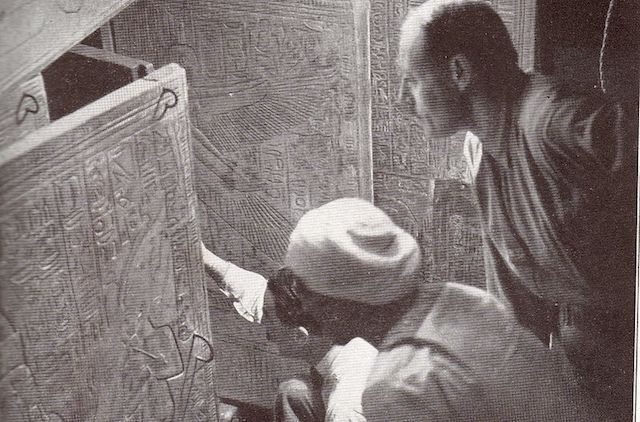
In light of the previous entry, it might sound particularly egregious that Howard Carter’s team was clumsy enough to inflict a skull fracture on King Tut’s remains. But it makes considerably more sense when you know the real state of his body when it was found. We’re used to images of tightly wrapped mummies simply placed in sarcophagi. That’s not at all how Tutankhamun’s body was preserved, instead being sealed into the sarcophagus with resin, and effectively having the iconic golden death mask glued to the corpse.
This was actually a fairly common aspect of the mummification process, and it worked so well that there are even hair samples from certain mummies. Thus his body wasn’t so much carefully lifted out in 1922 but pried out in chunks. (Yuck.) With such reckless treatment of the body happening it’s not so much surprising that a skull fracture occurred that could be mistaken for a violent blow, as it is that analysts were able to find the one partially-healed injury on his body that was the real cause of death.
2: Mummified With an Erection
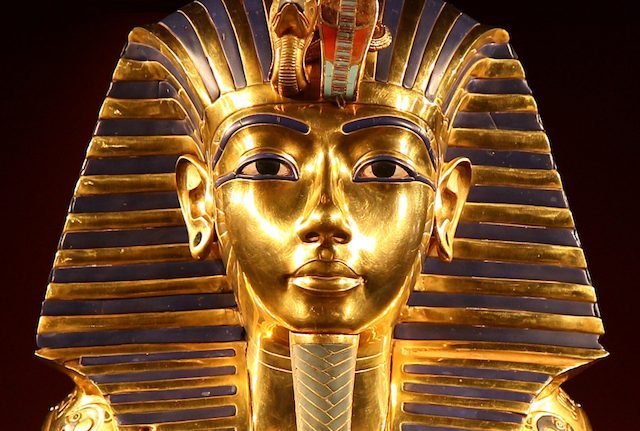
Here at TopTenz we try not to crass. We aren’t including this entry because we feel it’s good for a cheap laugh. Well, perhaps a little, but primarily it presents an interesting glimpse into just how much religious conservatism shaped Tutankhamun’s life and the surprising ways that manifested. He wasn’t embalmed in such a way that his member extended at a 90-degree angle from his body as a tribute to his virility in particular, but in imitation of the mythical murder of Osiris, the god of death, by his brother Seth. It ensured that in death he was supposedly more connected to the gods he’d devoted so much of his reign to restoring to their hallowed place.
For the same reason, his heart had been removed from his body and his skin had been treated with “a black lustrous coating,” as Howard Carter put it, to closer resemble images of Osiris. Unsurprisingly, considering how rough the removal of the body from the sarcophagus was, the penis was broken off and for awhile there were rumors it had been stolen.
1: His Tomb Was Not Meant for Him
Although there was indeed a rich haul of treasure from King Tut’s tomb, by the standards of the time it was actually something of a rush job. After all, the king died unexpectedly at a young age, so there was hardly going to be a tomb fit for a king ready. It was speculated that it was meant to be for a minor noble, or even sort of a sort of secondary tomb while others such as Queen Nefertiti were given comparatively opulent burials.
His tomb was so quickly prepared that there were paint splatters around that no one in King Tut’s day had bothered to clean up. It goes to show that even people who were supposed to be effectively gods on Earth were not really above the practical realities of their times.
Hi! I am a robot. I just upvoted you! I found similar content that readers might be interested in:
http://www.toptenz.net/10-fascinating-facts-king-tut.php
Downvoting a post can decrease pending rewards and make it less visible. Common reasons:
Submit